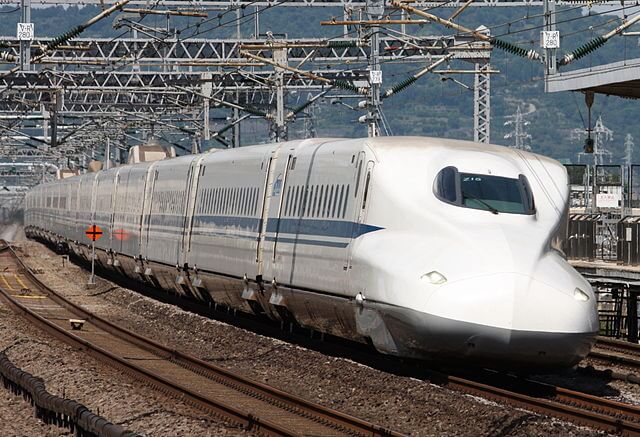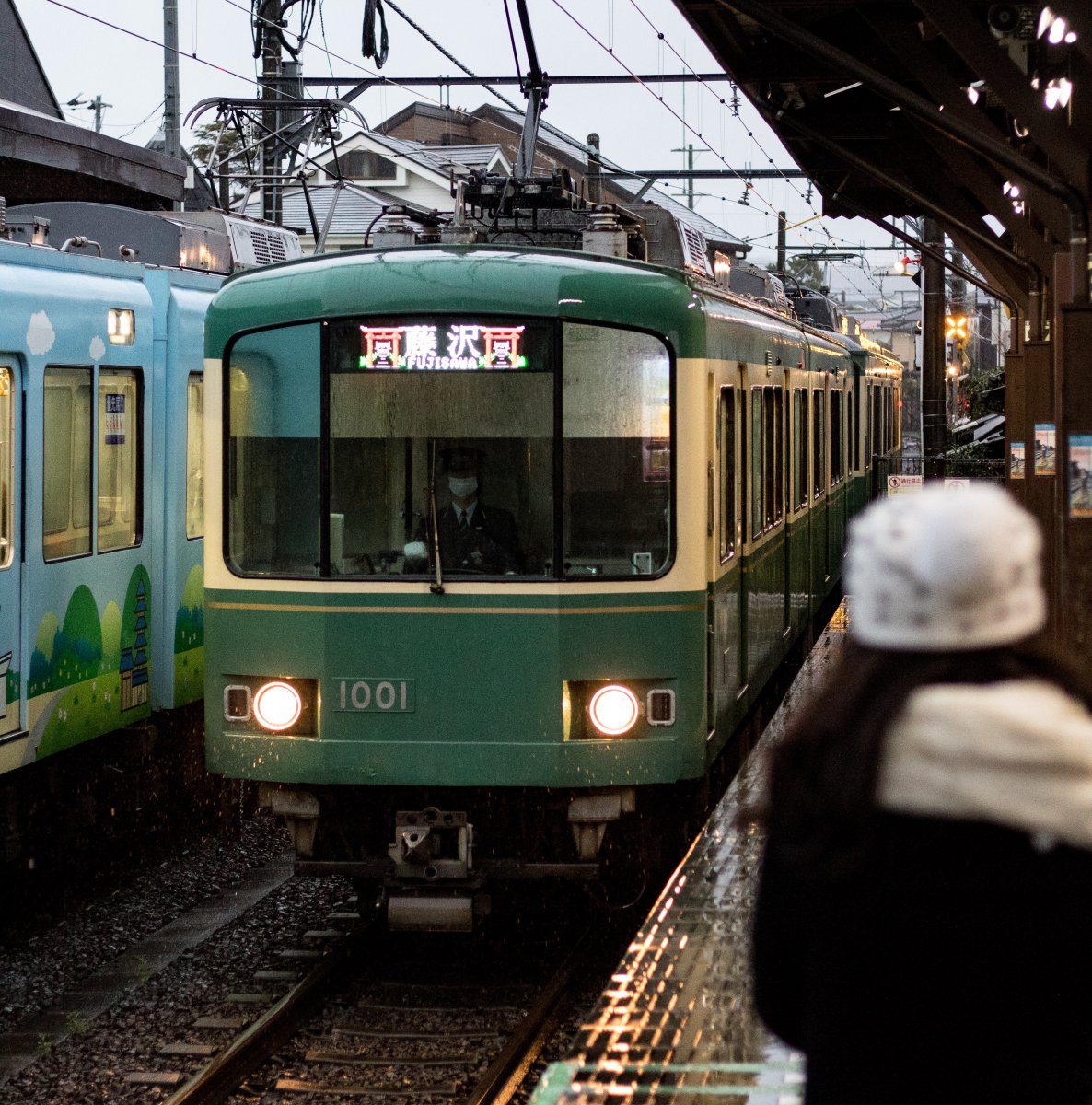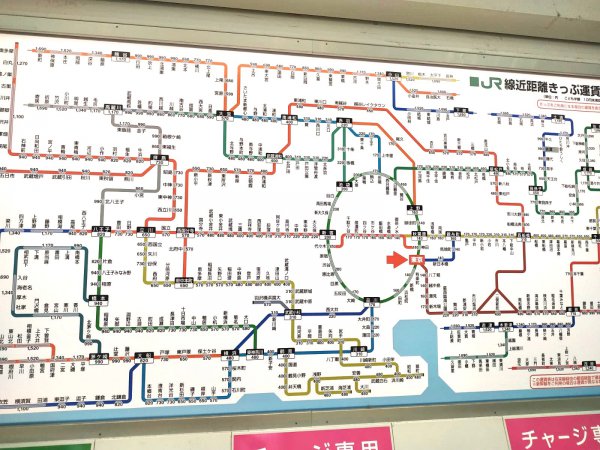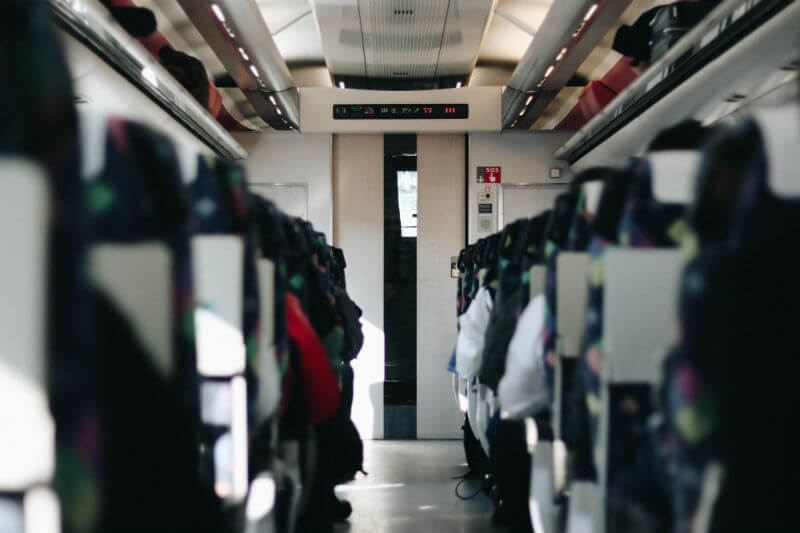When planning your trip to Japan, sooner or later the question of getting a Japan Rail Pass or not will come up. Depending on your travel itinerary, how many days you have in Japan, and where you plan on going, you may want to get this wonderful option before coming to Japan. The Japan Rail Pass is very convenient, moreover, it can save you a lot of money!
The Japan Rail Pass, commonly referred to as JR Pass, is the most economical means of traveling throughout Japan, especially for long-distance train travel. The pass can be used by anyone visiting Japan on a short-term tourist visa only and offers unlimited use of transportation offered by the JR Group – with a few exceptions, mentioned below.

There are different options for rail passes, valid for a chosen period of time in different regions nationwide. You can read all the different options on this website Rail Passes in Japan. The most convenient and popular one is the nationwide JR pass. Let’s have a look at the different things you need to bear in mind when purchasing the JR pass.
Different options of the JR Rail Pass

There are two types of the JR Pass: Ordinary and Green. The Green JR Pass is valid on first class cars that offer more spacious seats than Ordinary cars, they also offer enhanced board service and are generally less crowded. With a Green JR Pass you can use either class, while with an Ordinary JR Pass you can use only Ordinary Cars. Each of these types is available as a 7-day, 14-day, or 21-day pass.
Note: Most JR trains only offer Ordinary Cars while many long-distance trains also offer Green Cars.
Who can use the JR Pass?
All tourists that enter Japan on a short-term tourist visa can make use of the Japan Rail Pass. You will need to show the actual Temporary Visitor stamp/sticker you received upon entering Japan.
Purchasing and exchanging
Purchasing the JR Rail Pass is a two-step process. First of all, you will need to buy an ‘Exchange Order’ for the JR Pass. This can be done online or through a travel agent, the price for the JR Pass is everywhere the same, but some parties include a delivery fee. We recommend you get your JR Pass here. At this page you can easily select your preferred ticket and way of delivery. You will then receive a voucher that has to be exchanged to the actual pass inside Japan and within three months of purchase.

Exchanging the voucher for the JR Pass
After purchasing the Exchange Order, you will need to turn in the Exchange Voucher to receive the actual JR Pass. This can be done at the major train stations at airports inside Japan, see the list of JR Pass exchange and sales offices at the official website. Please be aware that:
- The name on the Exchange Order must be the same as the name appearing in your passport.
- Without your passport, you will not receive the JR Pass (photocopy is also not accepted).
Setting a starting date
When you exchange your voucher to the actual pass, you do not need to start using the pass from the same date. You can select any date within a one month period as your starting date. However, once the actual pass is issued, the starting date cannot be changed.
In addition, the starting date of the pass does not have to be the same date you enter Japan. For example when you arrive in Japan on July 5 and stay for 10 days, you can also decide to get a 7 day JR pass and “activate” it one July 8. The validity period of the Japan Rail Pass is based on calendar days (midnight to midnight) rather than 24 hour periods.
Costs of the JR Rail Pass
The prices of the actual Japan Rail Pass are everywhere the same, with 2 exceptions. We highly recommend purchasing an Exchange Order at a JR-designated sales office or agent overseas as this is much cheaper, see the overview below. In addition, some agencies might charge you a handling or delivery fee. Below are the costs for the different options of the pass.
| Duration | Ordinary | Green Car |
| 7 consecutive days | ¥ 29.650 | ¥ 39.600 |
| 14 consecutive days | ¥ 47.250 | ¥ 64.120 |
| 21 consecutive days | ¥ 60.450 | ¥ 83.390 |
| Duration | Ordinary | Green Car |
| 7 consecutive days | ¥ 33.610 | ¥ 44.810 |
| 14 consecutive days | ¥ 52.960 | ¥ 72.310 |
| 21 consecutive days | ¥ 66.200 | ¥ 91.670 |
* children under the age of six travel for free.
* children at the age from 6 – 11 years old travel against a reduced rate of 50%.
Price changes from October 2023
However, from October 2023, the price will increase somewhat by 69-77% to extend the availability of the Shinkansen. Now JR Pass can’t be used on Nozomi and Mizuho Shinkansen but after the price changes, you will be able to take those Shinkansen with an additional ticket.
Additionally, the discount when you purchase overseas will be no longer available after the change.
New prices are applicable from this fall as follows.
| Duration | Ordinary | Green Car |
| 7 consecutive days | ¥ 50.000 | ¥ 70.000 |
| 14 consecutive days | ¥ 80.000 | ¥ 110.000 |
| 21 consecutive days | ¥ 100.000 | ¥ 140.000 |
Validity of the JR Rail Pass
The Japan Rail Pass is valid on:
- JR trains; The pass is valid on almost all trains operated on the nationwide network of JR (Japan Railways), including Shinkansen, limited express, express, rapid and local trains.
- Tokyo Monorail to/from Haneda Airport;
- JR Ferry to Miyajima (Hiroshima);
- Some non-JR trains to access isolated JR lines; A small number of non-JR trains to access remote, isolated JR lines that would otherwise be inaccessible. However, pass holders may only get on and off at stations that provide a transfer to JR lines.
- Local JR buses; The pass is valid on local buses operated by JR (but not on highway buses).
Note: The JR Pass cannot be used on the Nozomi and Mizuho bullet trains, the fastest ones. The other bullet trains are perfectly good, but expect slightly longer travel times. For example, the Hikari Shinkansen, which is free of charge with the JR Pass, will get you in 3 hrs from Tokyo to Kyoto or vice versa. The Nozomi Shinkansen – which cannot be used with the JR pass – takes 2.5 hrs.
(As we mentioned above, the availability of the Nozomi and Mizuho will change in October 2023. The details have not been announced yet, but we will update accordingly.)
How much can you save with the JR Rail Pass?
Let’s say, you’re planning to visit Tokyo, Kyoto and Hiroshima for 7 days. Breaking down the traveling costs roughly and you’ll be able to see if getting the JR pass will be worth it or not!
Getting off the airplane at the Narita International Airport, and the first thing you might do is taking the Narita Express to the central part of Tokyo. It will take you to the central part of Tokyo such as Tokyo, Shinagawa, Shibuya and Shinjuku Station. You can use the JR pass on the Narita Express and it will save you about ¥3,000 in one way.
And in terms of getting around Tokyo, you can use a JR pass not only with a long distance train but also JR lines running through the main tourist attractions in Tokyo. The JR line’s train fare goes from ¥150 for the distance 1-3km, ¥240 for 11-15km. If you travel from Tokyo Station to Shibuya, it will cost ¥200, and if you travel from Tokyo to Yokohama (about 30km traveling distance), it will cost ¥480 for a one-way ticket.
The fastest and easiest way to travel from Tokyo to Kyoto is by Shinkansen. It will cost about ¥14,000 for a one-way ticket, and from Kyoto to Hiroshima, the ticket will cost about ¥11,600 for a one-way ticket.
Just summing up the shinkansen and the trains to the airport back and forth only can be over 30,000 yen. If you are planning to visit a couple of different prefectures in the long distance, it’ll be better and easier to travel with a JR pass. For example, if you are planning your trip combining Tokyo, Kyoto, and Hiroshima, the pass will save you money and some time!
How to use the JR Rail Pass
On the day of your set starting date, you can start using the JR Pass right away. Good to know: the JR Pass is calendar days based and not 24-hrs, so you might as well start using the card at midnight. Generally, the Japan Rail Pass is your ticket. No other ticket is needed except when using a reserved seat (free of charge for JR Pass holders). In that case, you will get a seat reservation ticket.
Seat reservations
Seat reservations are free for JR Rail Pass holders and especially during the high season, or when you need to be somewhere at a certain time, it is recommended to do so to guarantee your place. Or just to ease your mind. Also, on some of the trains, it is mandatory as there are only reserved seats available. For the local JR lines, it is not required, often it is not even possible to reserve.
Trains that require reservations:
- Narita Express (Tokyo – Narita Airport)
- Hayabusa and Hayate trains along the Tohoku/Hokkaido Shinkansen
- Komachi trains along the Akita Shinkansen
- Kagayaki trains along the Hokuriku Shinkansen
- Sunrise Seto/Izumo night trains
To make a reservation, you can go to any Travel Service Center or a Midori-no-madoguchi (ticket office) at the JR stations, or to the sales office of a JR-associated travel agency.
You can also book your ticket on the ticket vending machine at the station. If you want to use the machine, follow the steps below.
1. Scan the QR code of your pass and enter your passport number
2. Select the departure and arrival destination, travel date and time, and the type of train cars
3. Check the selected information, then issue your ticket
Alternatively, you can also make an online reservation on the website below.
Japan Rail Pass online reservation system
Please note that the card is strictly personal and cannot be shared!

Options for upgrading
It is not possible to upgrade the JR Pass to ride the Nozomi or Mizuho Shinkansen. You will still have to pay the entire ticket price. Therefore be careful not to board a Nozomi or Mizuho train by mistake!
Upgrading to a green car with the Ordinary pass is possible, however, the Ordinary pass will cover only the base fare. The Green car fee and eventual other supplement fees will have to be paid separately, which usually adds up to a rather large amount. If you plan on riding the Green cars on the long distances, your best option is getting a Green JR Pass.
JR Pass – value for money?
Depending on how much of the JR trains you will use, getting a JR Rail Pass can definitely save you some money. For example if you are visiting Tokyo and Kyoto, the Shinkansen ticket one way ticket will already costs you about about ¥ 13.000. When you are only visiting one of the big cities, it will probably not save you much money (though when you use the JR trains a lot, it could still be a good option).
The general rule is: if you’re traveling to one or more of the major cities (Tokyo, Kyoto, Hiroshima, Kanazawa, etc.) within seven days (or three/four cities within 14 days), the mother of all transportation passes is a great option and will pay off!

Follow us on Instagram or Facebook for more travel inspiration. Or tag us to get featured!
Happy traveling!
This post may contain some affiliate links. When you click through and make a purchase we may receive some commission, at no extra costs to you.


